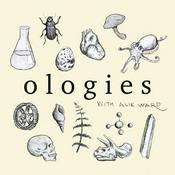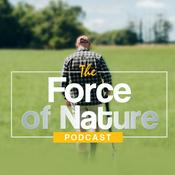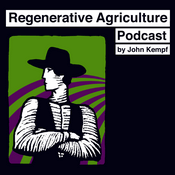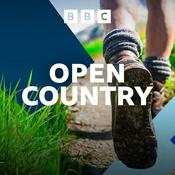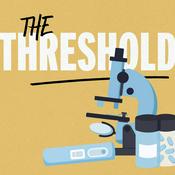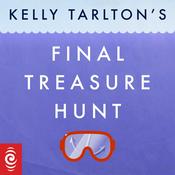32 episodes

The Birds Are Back
15/12/2025 | 26 mins.
The Kākāpō Files returns for a second season, to follow everyone’s favourite parrot through what is predicted to be the biggest breeding season on record. In episode 1, host Alison Ballance and Our Changing World’s Claire Concannon chat about what exactly is a kākāpō, discuss the conservation history of this endangered bird through the life story of two kākāpō, and discover just how big this breeding season might be.Send any Kākāpō Files questions and comments to [email protected] this episode:00:00 – 06:32 What is a kākāpō and how rare are they? 06:32 – 14:29 Kākāpō names, from Zephyr to Acheron, and a brief conservation history14:29 – 22:25 Rimu masting and the 2026 breeding season22:25 – 24:12 Kākāpō trivia24:12 - 25:56 Closing creditsLearn more:Follow the Kākāpō Files podcast to keep up to date.Want to start the new series prepared with all the backstory? Listen to the Voice of the Kākāpō series for a recap of the 2019 breeding season. Then listen to the episodes covering the interim 2022 breeding season, and about how a few male kākāpō have fared in the North Island, in the fenced Sanctuary Mountain Maungatautari.For more New Zealand science and nature find and follow the Our Changing World podcast, and subscribe to the show’s monthly newsletter.Guests:Claire Concannon, Our Changing WorldReferences:“Kākāpō: Rescued from the Brink of Extinction” by Alison Ballance (published 2018)Acknowledgement:Kākāpō Files is made in collaboration with the Department of Conservation’s Kākāpō Recovery Programme.Go to this episode on rnz.co.nz for more details

Introducing: Kākāpō Files II
26/11/2025 | 0 mins.
In 2019 Alison Ballance followed the bumpy, rollercoaster ride that was the kākāpō breeding season. Now she returns, six years on, to do it all over again. We'll meet familiar characters, of both the human and bird kind, as well as new faces. Will the chicks born in 2019 start to breed? How will the team fare with a more hands-off approach? Will the deadly aspergillosis that surfaced in 2019 return? And with the rimu mast predicted to be big, could this be the most successful breeding season yet? First episode drops 16th December. Don't miss it. Go to this episode on rnz.co.nz for more details

Our Changing World: Kākāpō update with Dr Andrew Digby
31/7/2024 | 41 mins.
Claire Concannon and Dr Andrew Digby talk about all things kākāpō: that habitat trial and where the birds are now, the next breeding season, and Andrew’s hopes for the future of this iconic manu. Go to this episode on rnz.co.nz for more details

Our Changing World: A year of mainland kākāpō
31/7/2024 | 28 mins.
In July 2023 four male kākāpō were released into the fenced Sanctuary Mountain Maungatautari – part of a new habitat trial to investigate suitable locations for the growing kākāpō population. But after a further six were introduced, the kākāpō began to wander – beyond the fence. A year on, and several escapes later, what’s been learned? And what’s next for kākāpō in Maungatautari? There are plenty of night-time wanderers in New Zealand that you might expect to come across driving on back roads – rats, mice, a seemingly endless number of possums.But it’s not often that you round a corner to come face to face with a kākāpō.Elwin’s escapadeThis was the surprising sight that faced Tyler James Lindsay very early one morning in January 2024.A Cambridge local, Tyler was driving a milk tanker along Scott Road, northeast of Sanctuary Mountain Maungatautari, when suddenly he saw before him a strange shape.“Just a big green bird. Just in the middle of the road looking straight at my lights, I think it was rather confused,” he says.Luckily, Tyler is into native birds, so he was aware that kākāpō had been introduced to the fenced sanctuary six months earlier. He knew exactly what he was looking at.The next day, Tyler’s report made its way to Sanctuary Mountain Maungatautari kākāpō ranger Dan Howie, who quickly began the search for the elusive Elwin.“Such an incredible interaction that he saw this bird out there – in the middle of the road no less – which is absolutely terrifying as kākāpō ranger,” says Dan.But this was not the first time, nor the last, that Dan would feel that fear.The habitat trialKākāpō numbers are growing. In 1995 there were just 51 kākāpō and the threat of losing them forever was all too real.A decade ago, around the time that Dr Andrew Digby joined the Kākāpō Recovery team, there were just over 120 kākāpō. Today there are 247.Intensive management and three quite successful breeding seasons have enabled this doubling of kākāpō numbers in the last 10 years. Initially, the challenge was to save the charismatic, flightless parrots from extinction. Now, the team also has an added challenge: where to put them.To date, the majority of kākāpō have lived on offshore predator-free islands in the rohe of Ngāi Tahu – Whenua Hou / Codfish Island next to Rakiura / Stewart Island, and Pukenui / Anchor Island in Fiordland. But these islands are getting full…Go to this episode on rnz.co.nz for more details

Coming Soon: Voice of Tangaroa
20/2/2024 | 0 mins.
Coming soon to RNZ Podcasts is the new series Voice of Tangaroa, exploring the state of our oceans, and the extraordinary variety of life that calls it home. Released weekly from Thursday 29 February, you can find the episodes in the Voice of Tangaroa or Our Changing World podcast feed wherever you get your podcasts.Voice of Tangaroa is a joint production between RNZ's Our Changing World and New Zealand Geographic.Reporting for this series is Public Interest Journalism funded through NZ On Air. You can learn more and read the articles for free at www.nzgeo.com/seasGo to this episode on rnz.co.nz for more details
More Science podcasts
Trending Science podcasts
About Kākāpō Files II
Listen to Kākāpō Files II, Ologies with Alie Ward and many other podcasts from around the world with the radio.net app

Get the free radio.net app
- Stations and podcasts to bookmark
- Stream via Wi-Fi or Bluetooth
- Supports Carplay & Android Auto
- Many other app features
Get the free radio.net app
- Stations and podcasts to bookmark
- Stream via Wi-Fi or Bluetooth
- Supports Carplay & Android Auto
- Many other app features


Kākāpō Files II
download the app,
start listening.
